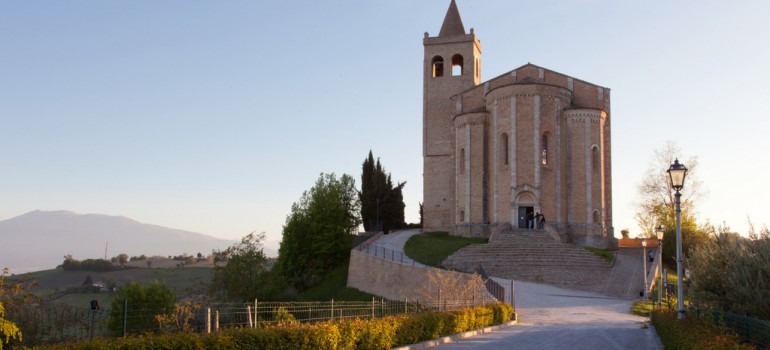
The Church of St. Maria della Rocca is one of the most important local monuments and its location was once distant from the inhabited city. In its place, there was a Longobard castle and a small church belonging to Longino D’Azzone, local nobleman of French German origins. In 1039 the castle and the small church were given to the Farfa Abbey and thus, to the Benedictine monks. As testified by an epigraph, in 1330 works began to demolish the castle and build a bigger church. The old church was comprised in the new one, thus creating two side passages, still visible from the crypt, one of which has been used as a burial ground since the 16th century. The outer brick structure is crossed by travertine pilasters on the apsidal side; the crypt can be entered through a travertine portal with sculpted foliage, animals and spirals, placed in the middle of the main apse. Recently, other works have focused on the area surrounding the church. A wing wall has been built on the left side of the church, while old dwellings have been demolished (the last one in 1999) to enhance visibility and offer an overall sight of this enchanting place. Even the crag on which the church is located has undergone many restorations over time which have given it its present appearance characterized, above all, by some spurs added in 1946 to give more stability. The crypt, located in the ground floor displays several brick columns with rounded capitals bearing pointed and full-centre arches. Still visible are some frescos by the Maestro of Offida which depict the series of St. Catherine from Alessandria, St. Lucia and several other saints and throne Virgins. The upper church is a single nave and displays some traces of various frescos which once fully decorated the walls. The most intact are those adorning the apsidal conch which show some prophets, angel players and Saint Virgins, portrayed by the Milanese Maestro Ugolino of Vanne. On the left of the transept there are frescos depicting the life of St. Benedict from Norcia; the same side of the nave hosts a fresco depicting the Madonna of Milk with St. Sebastian by Brother Marino Angeli. The front side is enriched with frescos depicting Christ’s Burial, the Crucifixion and a Madonna with Child and Saint which is the single Renaissance fresco ascribed to Vincenzo Pagani. The paved floor approaching the church dates back to 2004.
Altri monumenti a Offida
 Lascia un commento
Lascia un commento